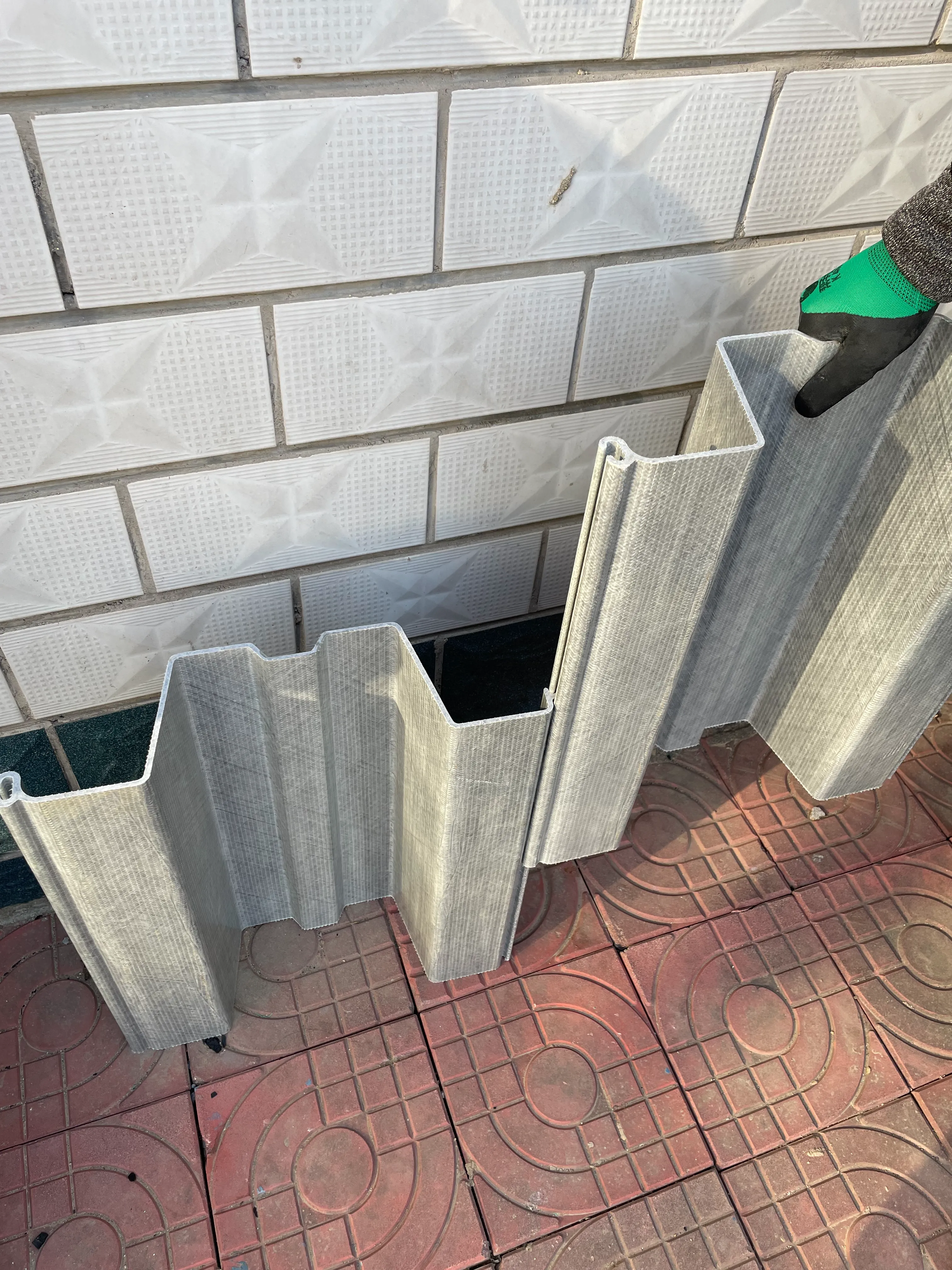loading...
- No. 9, Xingyuan South Street, Dongwaihuan Road, Zaoqiang County, Hengshui, Hebei, China
- admin@zjcomposites.com
- +86 15097380338
- Welcome to visit our website!
frp pultruded sections
Understanding FRP Pultruded Sections A Comprehensive Overview
Fiber Reinforced Polymer (FRP) pultruded sections have emerged as a pivotal material in modern construction and engineering. Known for their remarkable strength-to-weight ratio, corrosion resistance, and versatility, these materials are increasingly being selected for a variety of applications across different industries. This article delves into the characteristics, advantages, applications, and future potential of FRP pultruded sections.
What is FRP?
FRP is a composite material made from a polymer resin reinforced with fibers, typically glass, carbon, or aramid. The pultrusion process involves pulling fibers through a resin bath and then through a heated die to cure the resin and create a continuous profile. This method allows for the production of consistent and high-strength sections that can be cut to various lengths as per project requirements.
Characteristics of FRP Pultruded Sections
1. Lightweight One of the most significant benefits of FRP is its light weight compared to traditional materials like steel and concrete. This characteristic not only makes it easier to handle and transport but also reduces the overall load on supporting structures.
2. Corrosion Resistance FRP is impervious to moisture, chemicals, and environmental factors, making it an ideal material for applications in harsh conditions. For instance, it does not rust or corrode, which extends the lifespan of structures significantly.
3. High Strength Despite its lightweight nature, FRP exhibits high tensile and compressive strength. This attribute allows for the design of slender structures that do not compromise on performance.
4. Thermal and Electrical Insulation FRP materials do not conduct electricity and possess excellent thermal insulation properties, making them suitable for electrical applications and environments requiring temperature control.
Advantages of Using FRP Pultruded Sections
The advantages of FRP pultruded sections extend beyond their physical properties
- Design Flexibility FRP can be manufactured in various shapes, sizes, and colors, enabling architects and engineers to design aesthetically pleasing structures without compromising structural integrity. - Prevention of Maintenance Due to their corrosion resistance and durability, FRP components often require less maintenance compared to traditional materials, resulting in lower long-term costs.
frp pultruded sections

- Sustainability FRP materials are increasingly being recognized for their environmental benefits, particularly when sourced from recycled materials. The reduced maintenance and longevity also contribute to lower environmental impact over the lifecycle of a structure.
Applications of FRP Pultruded Sections
FRP pultruded sections find extensive use in diverse applications, such as
- Infrastructure Bridges and walkways, especially in environments prone to corrosion, benefit from the lightweight and durable nature of FRP.
- Marine Applications Given its resistance to saltwater, FRP is widely used in docks, piers, and other marine infrastructure.
- Industrial Settings In areas like chemical plants where exposure to aggressive materials is common, FRP's resistance to corrosion makes it invaluable.
- Architectural Elements Designers increasingly leverage FRP for canopies, facades, and other aesthetic features where both function and form are important.
Future Prospects
As industries continue to seek innovative solutions to traditional material challenges, the market for FRP pultruded sections is expected to grow. Ongoing advancements in materials science are likely to improve the properties of FRP, making it even more competitive against conventional materials. Furthermore, with a heightened focus on sustainable practices, FRP's recyclability and low maintenance needs position it favorably for future constructions.
Conclusion
In summary, FRP pultruded sections represent a significant advancement in composite materials, offering an array of benefits that cater to the needs of the modern world. As awareness of these advantages spreads and technology continues to evolve, FRP's role in construction and engineering will undoubtedly expand, leading to more innovative and sustainable building solutions.
-
The Rise of FRP Profiles: Strong, Lightweight, and Built to LastNewsJul.14,2025
-
SMC Panel Tanks: A Modern Water Storage Solution for All EnvironmentsNewsJul.14,2025
-
GRP Grating: A Modern Solution for Safe and Durable Access SystemsNewsJul.14,2025
-
Galvanized Steel Water Tanks: Durable, Reliable, and Ready for UseNewsJul.14,2025
-
FRP Mini Mesh Grating: The Safer, Smarter Flooring SolutionNewsJul.14,2025
-
Exploring FRP Vessels: Durable Solutions for Modern Fluid HandlingNewsJul.14,2025
-
GRP Structures: The Future of Lightweight, High-Performance EngineeringNewsJun.20,2025
